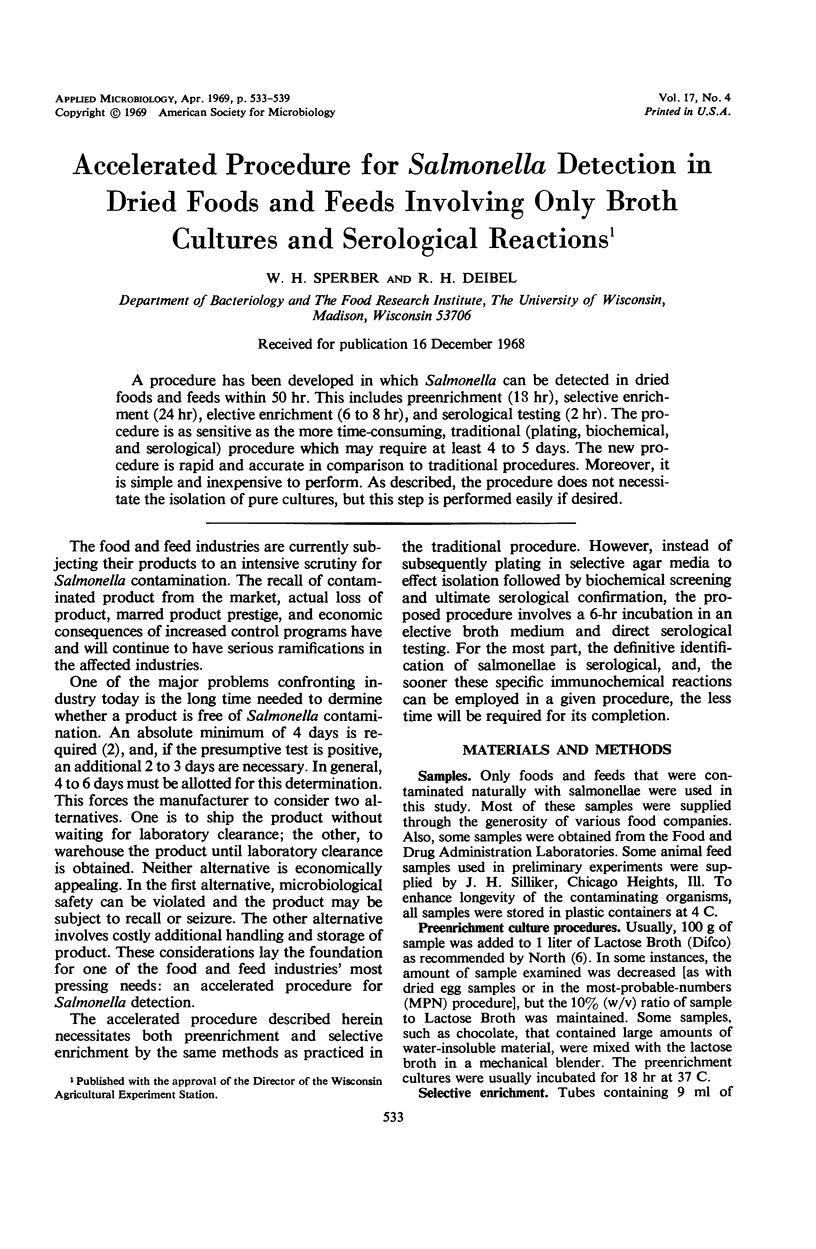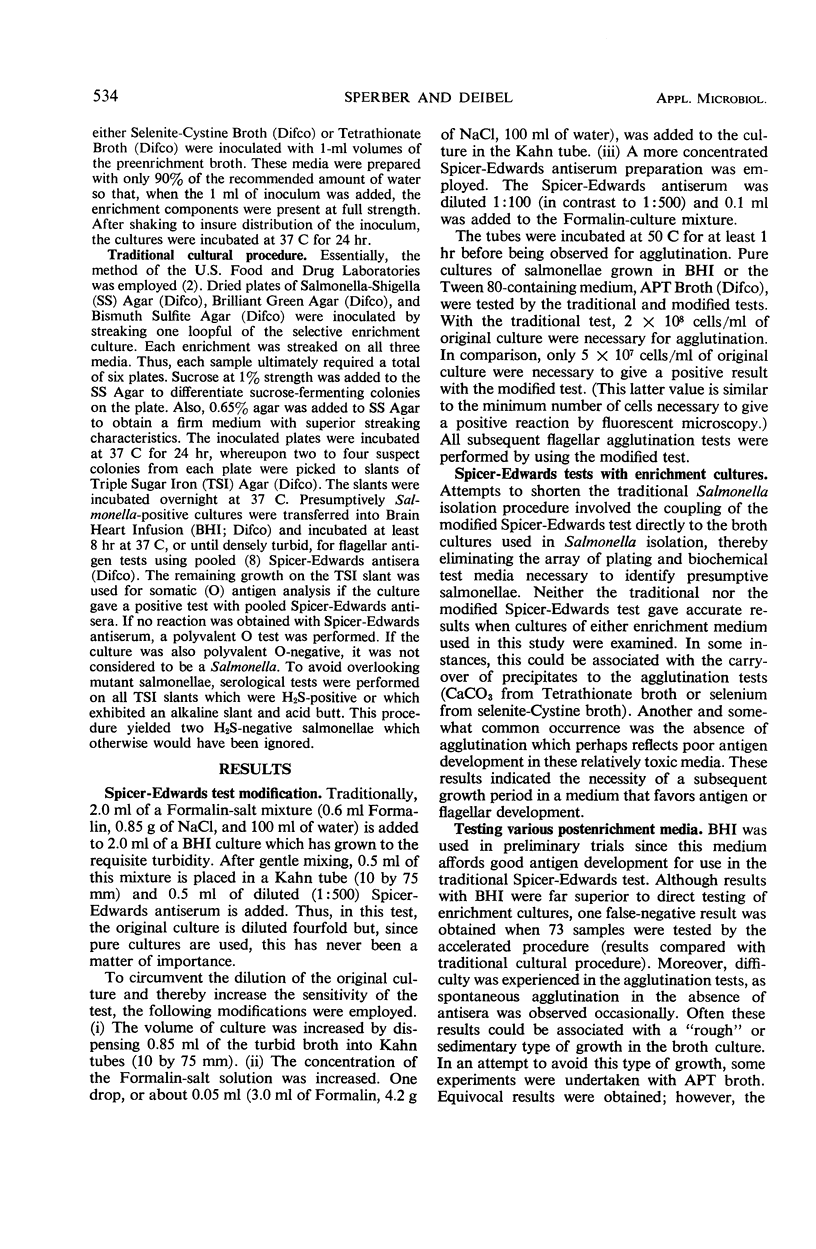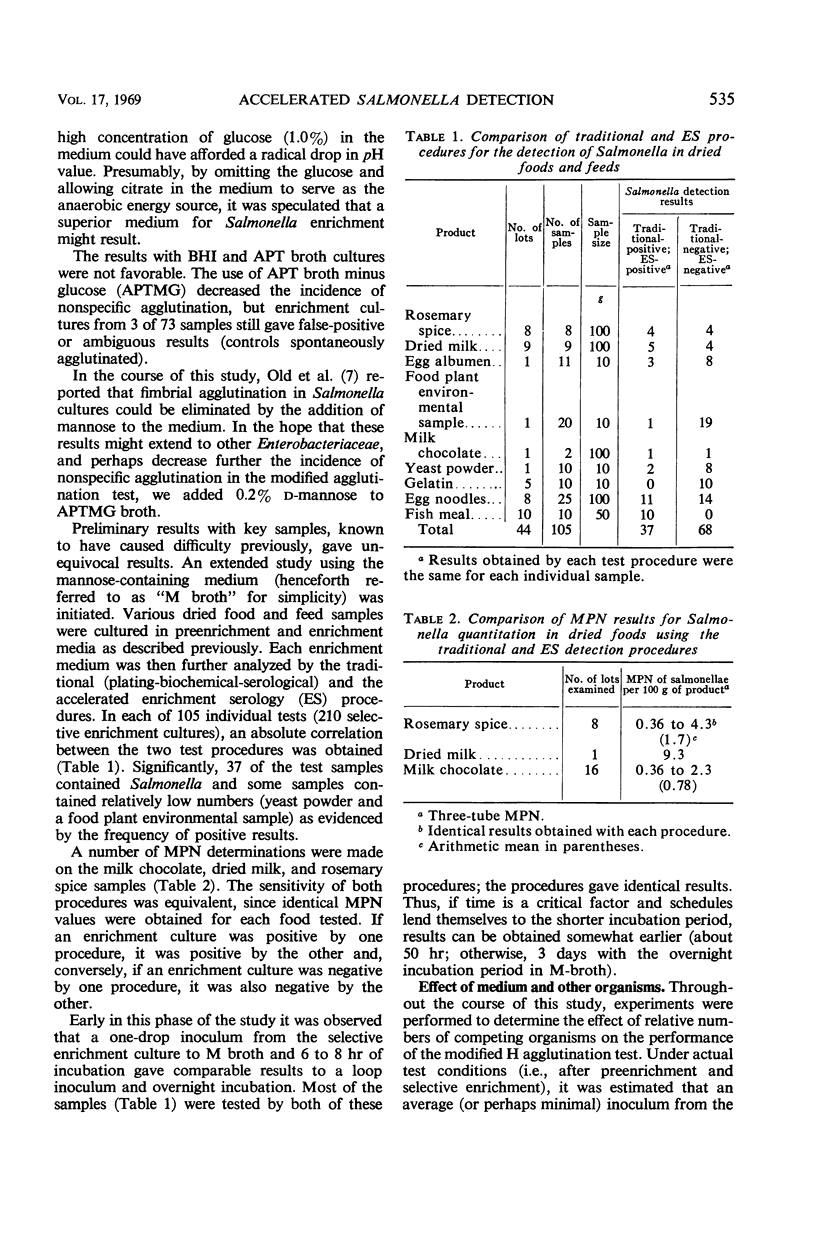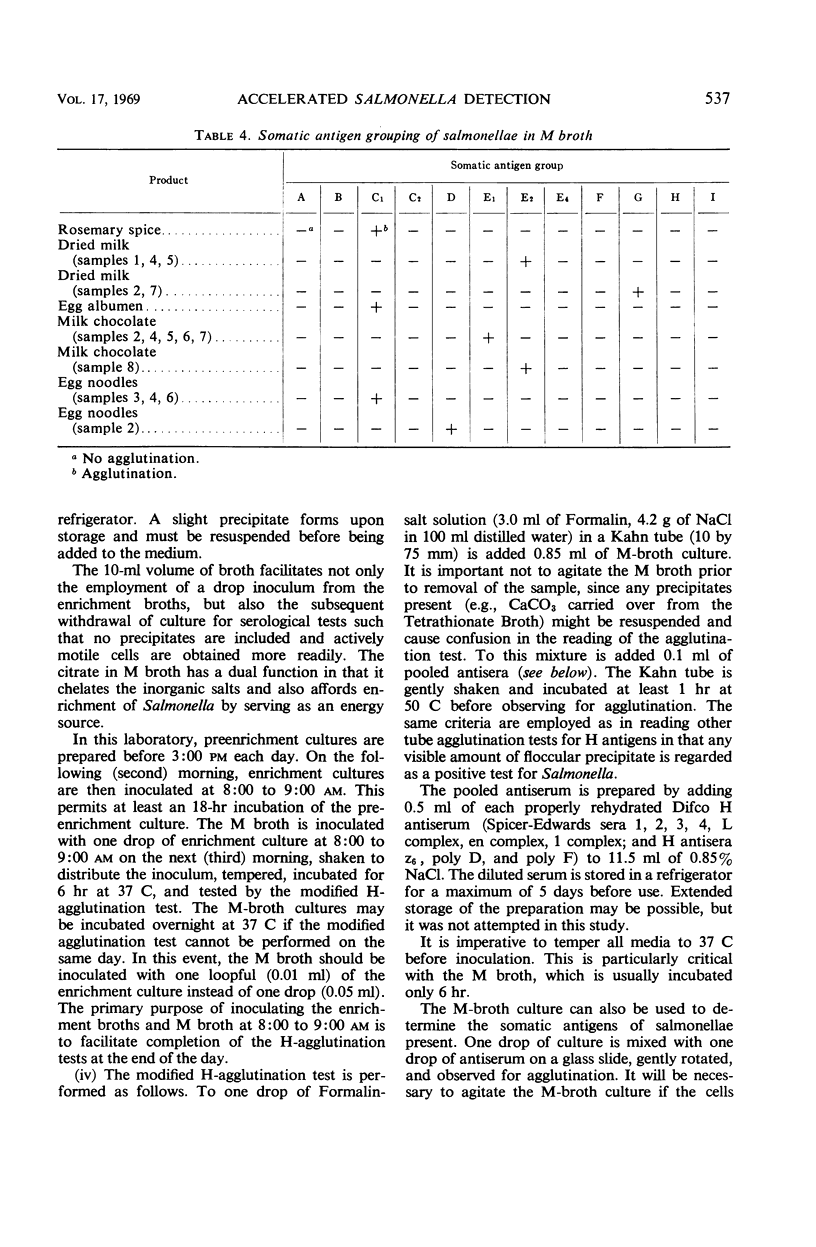Abstract
A procedure has been developed in which Salmonella can be detected in dried foods and feeds within 50 hr. This includes preenrichment (18 hr), selective enrichment (24 hr), elective enrichment (6 to 8 hr), and serological testing (2 hr). The procedure is as sensitive as the more time-consuming, traditional (plating, biochemical, and serological) procedure which may require at least 4 to 5 days. The new procedure is rapid and accurate in comparison to traditional procedures. Moreover, it is simple and inexpensive to perform. As described, the procedure does not necessitate the isolation of pure cultures, but this step is performed easily if desired.
Full text
PDF






Selected References
These references are in PubMed. This may not be the complete list of references from this article.
- NORTH W. R., Jr Lactose pre-enrichment method for isolation of Samonella from dried egg albumen. Its use in a survery of commercially produced albumen. Appl Microbiol. 1961 May;9:188–195. doi: 10.1128/am.9.3.188-195.1961. [DOI] [PMC free article] [PubMed] [Google Scholar]
- Old D. C., Corneil I., Gibson L. F., Thomson A. D., Duguid J. P. Fimbriation, pellicle formation and the amount of growth of salmonellas in broth. J Gen Microbiol. 1968 Apr;51(1):1–16. doi: 10.1099/00221287-51-1-1. [DOI] [PubMed] [Google Scholar]
- SILLIKER J. H., FAGAN P. T., CHIU J. Y., WILLIAMS A. POLYVALENT H AGGLUTINATION AS A RAPID MEANS OF SCREENING NON-LACTOSE-FERMENTING COLONIES FOR SALMONELLA ORGANISMS. Am J Clin Pathol. 1965 Jun;43:548–554. doi: 10.1093/ajcp/43.6.548. [DOI] [PubMed] [Google Scholar]


